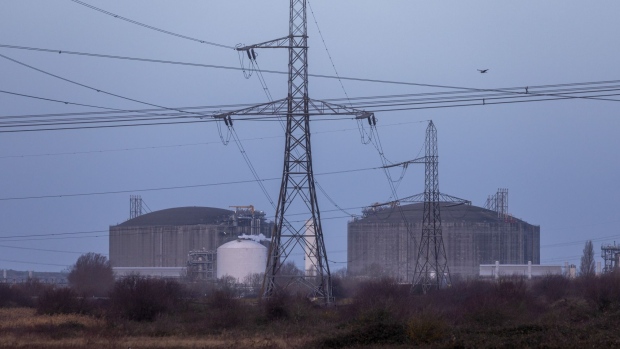Feb 17, 2022
U.K. Needs Much More Power Storage as Part of Its Green Future
, Bloomberg News

(Bloomberg) --
The U.K. needs to substantially expand its capacity for storing electricity for longer in order to maintain energy security as it shifts to greener power, according to Aurora Energy Research.
As much as 24 gigawatts of long duration electricity storage -- about eight times the current installed capacity -- may be needed to help integrate intermittent renewable sources like wind into the energy system, according to a report by the Oxford-based power analytics company.
“This amount of storage capacity will not only play a major role in reducing emissions, but also significantly reduce the U.K.’s reliance on imported gas and in return, keep household energy bills lower and less volatile,” said Stephen Wheeler, managing director of SSE Renewables.
Britain is targeting eliminating fossil fuels from power plants by 2035, with renewables playing a key role. But unlike gas- and coal-fired stations, wind and solar power generation can’t just be turned on when needed and are at the mercy of the weather. That means more storage is needed to keep those supplies for longer -- even just a few hours -- until required.
A common example of LDES is pumped hydro storage, where surplus electricity is used to pump water to a higher reservoir, with the flow then reversed to produce more electricity when needed. Other types include liquid air energy storage, where air is stored in liquid form before being pumped and heated to drive a turbine, or flow batteries, which act as a type of rechargeable battery.
Introducing LDES in large quantities by 2035 could reduce reliance on natural gas by 50 terawatt-hours a year, the report showed. Total U.K. gas demand in 2020 was about 809 terawatt-hours, according to government figures. But more state policy is needed to help get these technologies into more widespread use, such as establishing a cap-and-floor mechanism to ensure financial viability of investments, Aurora said.
©2022 Bloomberg L.P.


